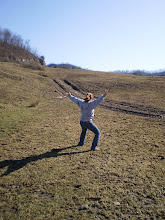An artistic tradition flourishes for Palm Sunday
http://www.latimes.com/news/local/la-me-palm-sunday-art4-2009apr04,0,5597153.storyOkay...so my first thought...
Most of LA Times stories have a couple bold lines at the beginning of their stories that is kind of like a pre-lead summary. Is that what a deck is? These are always super helpful, when I'm going through a story to see if it's something i wanna read. I read the title, the little blurb, look at the pictures and maybe read the lead. I think that's what makes the lead so important. Anyway...
So, I wanted to do an experiment with this piece. Because I think the structure of a story is one of the hardest aspects of journalism. So, I copy & pasted the story into a word document and highlighted each logical section with a different color. Here's what I came up with:
- "deck" (if that's what it is)
- The first three paragraphs are specific history on Torres, the subject of our story
- the next two paragraphs read like an explanatory piece, explaining how the palms are put together
- The next blurb & quote are misc. details
- the next two big paragraphs are background information on Palm Sunday
- the next three paragraphs zoom out to Palm art across cultures & around the world
- the next three paragraphs are more specific history on Torres
- the next seven mini-paragraphs explain specifically how the weaving is done.
- The last paragraph is a kicker which sets the scene of where the palms end up
so it goes: scene-setting lead --> Torres' history --> Palm art process --> misc. details --> Palm Sunday --> Palm sunday around the world --> Torres' history --> Palm art process --> scene-setting Kicker
Okay, so when I first read this piece I was trying to pay close attention to the structure, because it really seemed like it was all over the place. Parts of it read like an explanatory story, parts of it read like a profile of Torres, but i felt like the structure was scattered... When I did my little color-coded break down, I saw that the story definitely has a structure because it comes full circle. The focus is, at its narrowest, on Torres' Palm Art business, then it zooms out to Palm art in general, then to Palm Sunday in general, then back to Torres' Palm Art.
This doesn't necessarily fit any of the structures we've learned in class (maybe a "kabob"?) but I think it's okay because it has a structure of its own. I also like that the piece started with a scene setter lead and then ended with a scene-setting kicker.
Alright, now that I am done micro-analyzing the structure...on to some other stuffs.
First off, the picture was so cool! The caption & the picture were what drew me in and made me decide to read this piece. It's cool to think about all the work that probably went into selecting that particular picture...
I also really liked the scene setter lead. I attempted one of those for my last piece and I had trouble because every time I reworked it, it was either too detailed or too bland...but the journalist definitely found a happy medium. The lead was interesting, concise and not overly-descriptive.
One thing I did notice was that there was not much attribution. There were only 3 direct quotes in the whole piece, and only one from Torres, (who most of the piece was focused on.)
Also, I feel like part of the job of a reporter is to make sure to explain things, because you don't know how much your audience knows about the topic. That being said, I had no idea what the, "Roman Catholic Diocese of Orange," was...I'm protestant, so I'm not familiar with the catholic institutional structure. I don't think that journalists should talk to their audience as if they were stupid, but I do think it's necessary to explain more obscure things.
The piece was pretty good overall. It definitely has a sweet lead, a functional and different structure, it comes full circle, it is interesting, timely and it explains on many different levels.
It could have a little more attribution, and it could also do with a little more explanation.
p.s. this has nothing to do with anything, but it is my favorite quote and i wanted to share it...
“The only people for me are the mad ones, the ones who are mad to live, mad to talk, mad to be saved, desirous of everything at the same time, the ones who never yawn or say a commonplace thing, but burn, burn, burn, like fabulous yellow roman candles exploding like spiders across the stars"
night! Happy Palm Sunday!

First of all, that is indeed a deck.
ReplyDeleteAs for the structure, the inverted pyramid may be the most common style, but any organization that's both logical and engages the reader will work. Sometimes adjustments need to be made to the existing structures, especially when you're working with a narrative like the one included in your story. (Though this article still features a lead and nut graf.)